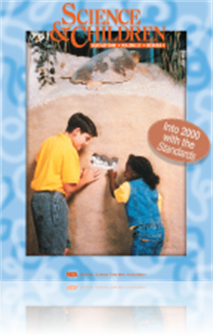All Resources
Journal Article
How Can We Put Cooperative Learning Into Practice?
Research suggests that if you want more students to learn more material, if you want students to feel more confident about themselves, and to be motivated to learn, if you want them to accept differences among students, then you should have your stud...
Journal Article
When science teachers pass up the use of an inductive approach in their teaching, they miss a golden opportunity to improve their chances of attaining one of their avowed and highly regarded objectives of science teaching—the development of ability...
Journal Article
There’s No Such Thing as a One-Celled Plant or Animal
Early biologists classified living organisms based on what they knew about life: All living things were either animals or plants. The fossil record as late as the 18th and 19th centuries seemed consistent with this two-part scheme. In recent years, m...
Journal Article
Editor's Note: Happy New Year and Welcome to the New Millennium
Science and Children’s editor shares thoughts regarding the current issue....



